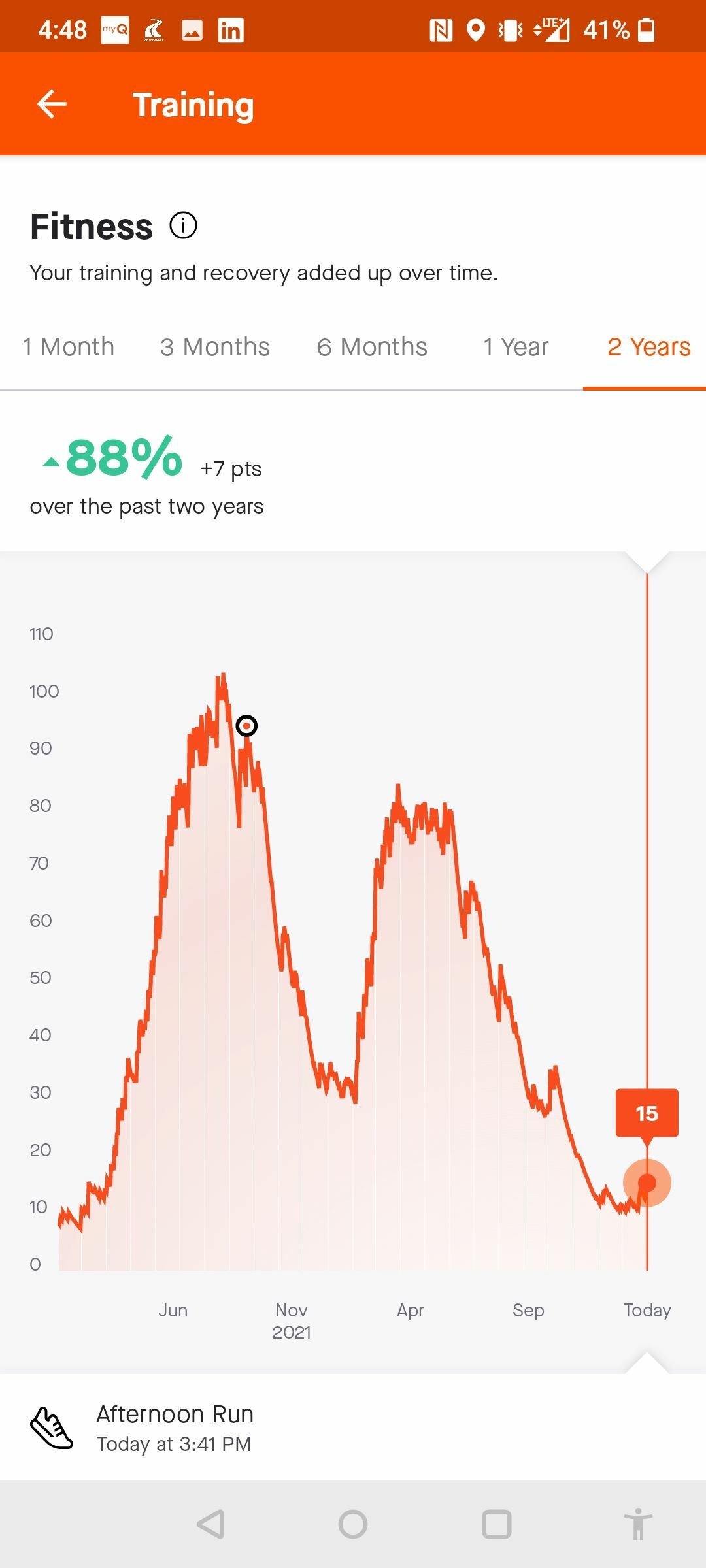
I like the concept of fitness as a ratio of effort/intensity vs rest over time. But the calculation needs to be updated, because as it stands, it gives me peaks of around 110, and lows of about 11 in the past two years. I know it's relative, and it's accurate that my intensity and frequency changes seasonally, but it's misleading in that it looks like I'm 10x more fit in the summer than in the winter. I'd like the range to be more indicative of performance potential. Ex: in the winter when my score is 11, i can probably still run a 5k, bike a century, etc (whatever baseline metric) about 70-80% as fast as my peak. So I'd expect the fitness scores to reflect that. If my peak is 110, my low should be 70 or so. Not 11...

